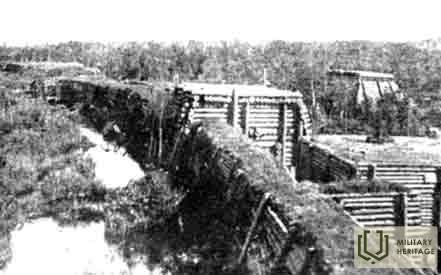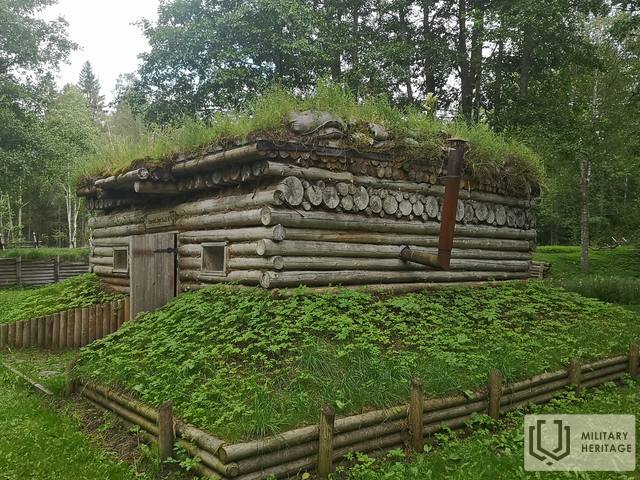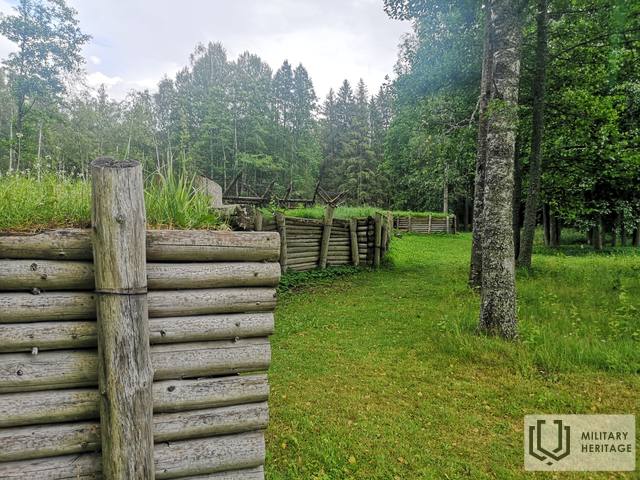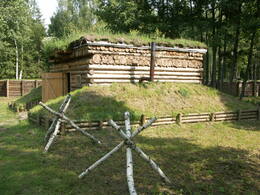German rampart I WW1
On January 23 (10), the leadership of the 12th Russian Army ordered the Latvian and Siberian riflemen to restore the previous position of the front. The Latvian rifle regiments sent to rest were again called to the front. The 3rd Kurzeme and 4th Vidzeme Latvian Regiments were assigned to the center of the attack, but the 12th Siberian and 54th Siberian Regiments were appointed on both flanks. The 4th Vidzeme Latvian Regiment was ordered to attack from the southern slope of Ložmetējkalns with the left flank of the unit along both sides of the German rampart on January 12 at 5.00 am, the right flank had to work together with the 3rd Kurzeme Latvian Rifle Regiment. Suffering heavy losses, the front companies of both regiments temporarily occupied the German positions at the 16th Goal in Maastricht. Depressed by the German forces, the riflemen retreated to the Ložmetējkalns district during the day. Apparently the 4th Vidzeme and 3rd Kurzeme regiments launched the attack at different times. During the preparation for the complex night battle, no physical contact was established between the soldiers of the two regiments. The attack by the four regiments did not have a concrete result either, because no one was conducting this night combat operation centrally.
The branch of the Latvian War Museum "Christmas Battle Museum" is located in the home of "Mangaļi" in Valgunde Parish, Jelgava Region. The museum houses the Christmas Battle Museum and World War I fortifications. Reconstructed section of the fortification system can be seen - a blind and a fragment of the first line of defense of the "German Wall"
Source: https://en.wikipedia.org/wiki/Winter_Battles (views: 23.05.2021
Related objects
Christmas Battle Museum
The museum is located in “Mangali” house, Valgunde Ru ral Territory, Jelgava Municipality, and it is a branch of the Latvian War Museum. It was unveiled in 2005 at the site of the Christmas Battles that occurred during World War I. Unique World War I fortifications still remain at the battle sites. The open-air exhibition of the Christmas Battle Mu seum reconstructs a section of the fortification system – the trench shelter and part of the first line of German defence – the “German rampart”, which is the only object of this kind in the Baltic states. The Christmas Battles are one of the best known and most dramatic events of World War I in Latvia. They are an event of special importance in Latvian military and cultural his tory. Intense fighting took place for six days, leading to heavy casualties. The battles are mainly associated with the attack of Latvian Riflemen against the German Army units, which took place in particularly severe and unfa vourable winter conditions. This is an unprecedented case of a major combat operation launched without artillery support. Today, the museum artefacts found at the sites of the bat tle are on display. The indoor exhibition is open at certain times, while the exhibition of outdoor fortifications is open every day. Tourist routes and nature trails have been cre ated in the surrounding area.
Related stories
An entry in the diary of the moment when soldiers learn about preparing for the Christmas battles.
Latvian riflemen and their officers were informed at the last minute about the start of the battle. Rūdolfs Ivanovs, a non-commissioned officer of the 5th Zemgale Latvian Rifle Regiment, described in the diary the last evening before the start of the battle. A short, but bright and authentic text that shows a very important moment for a soldier - learns about the day of battle.








